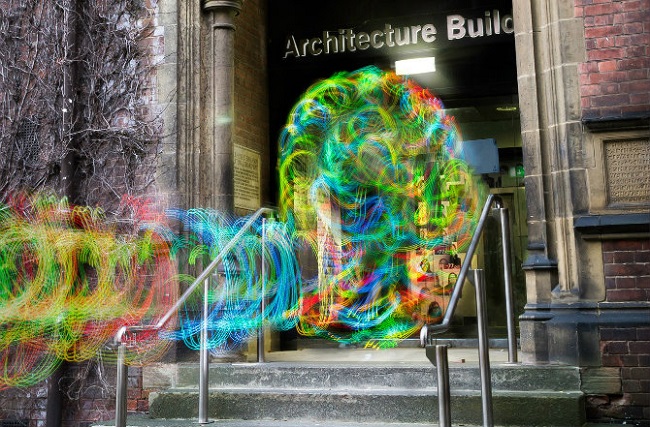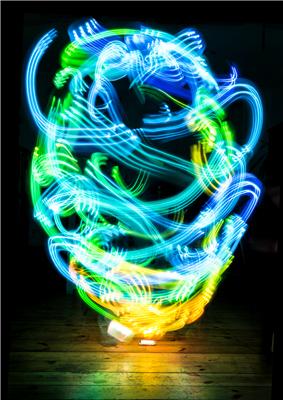
Transforming light into magical bands of energy by way of camera exposure time is a semi-professional photographic technique for capturing interesting images of light in motion. Newcastle University research Luis Hernan takes this technique one step further by combining it with a Kirlian machine to reveal the underlying, invisible networks of Wi-Fi signals in startling colors as part of his Digital Ethereal exhibit.
Kirlian devices are typically homebrewed machines that use high voltage to create contact print photographs of coronal discharge, the electrical discharge produced by ionizing a fluid surrounding a conductor. While Kirlian photography is often associated with pseudo-science and the supernatural, Hernan’s intentions are guided by the philosophical notion that modern conveniences are reliant on Wi-Fi signals, yet we have no idea what they actually look like. He seeks to rectify this.

Hernan’s Kirlian device is built from an Arduino UNO board connected to an Arduino Wifi Shield; the device functions by scanning for local area networks and then translating the received signal strength index (RSSI) into a corresponding color on an LED based on a five-color heat map scheme. Combining this color-change effect with long-exposure time on a camera yields a photograph depicting signal strength variation as Hernan deliberately walks around with the device. A rather simple but brilliant approach for visualizing a Wi-Fi network.

Wi-Fi signals change as they warp around objects.
“The device is moved through the space, which is then registered in a long-exposure photograph,” explains Hernan. “This process lasts for several minutes, and due to the brightness of the device, my figure is ghosted away in the process. In some pictures you can see my feet or even my blurred head underneath the light strikes.”
Hernan released an accompanying app on Android’s Googleplay marketplace, allowing users to experiment with creating their own Wi-Fi signal visualization.
Advertisement
Learn more about Electronic Products Magazine





